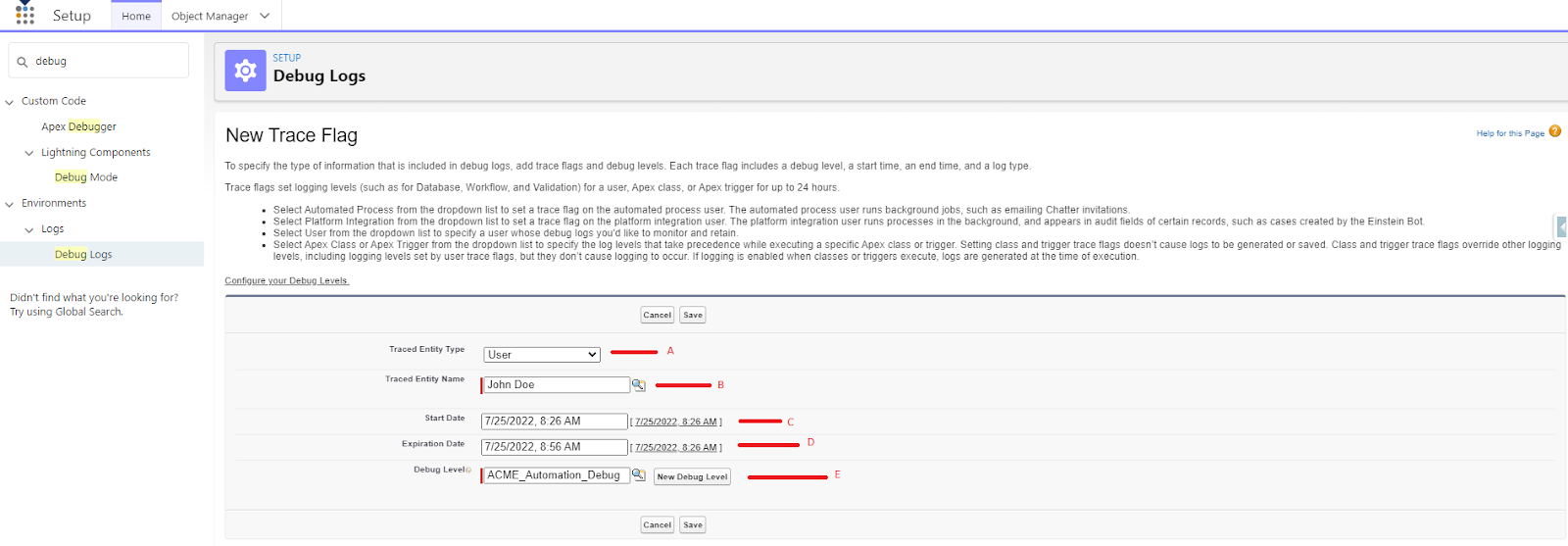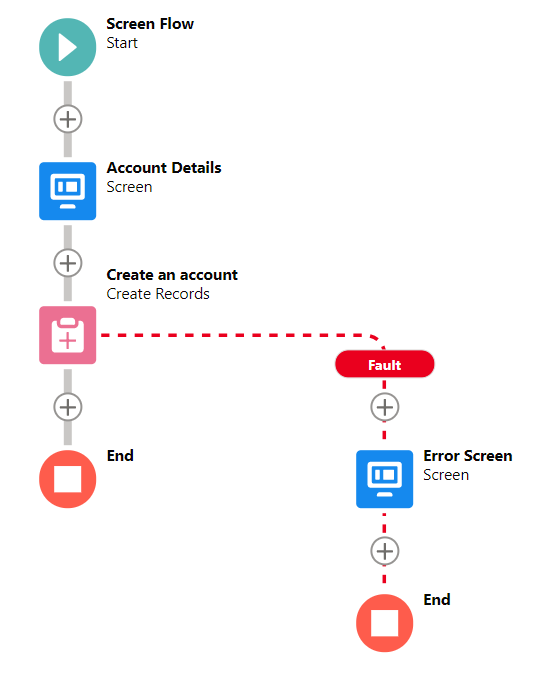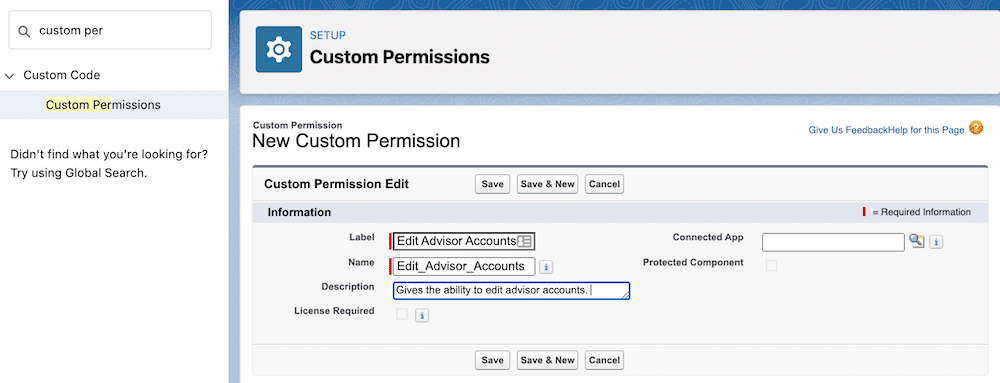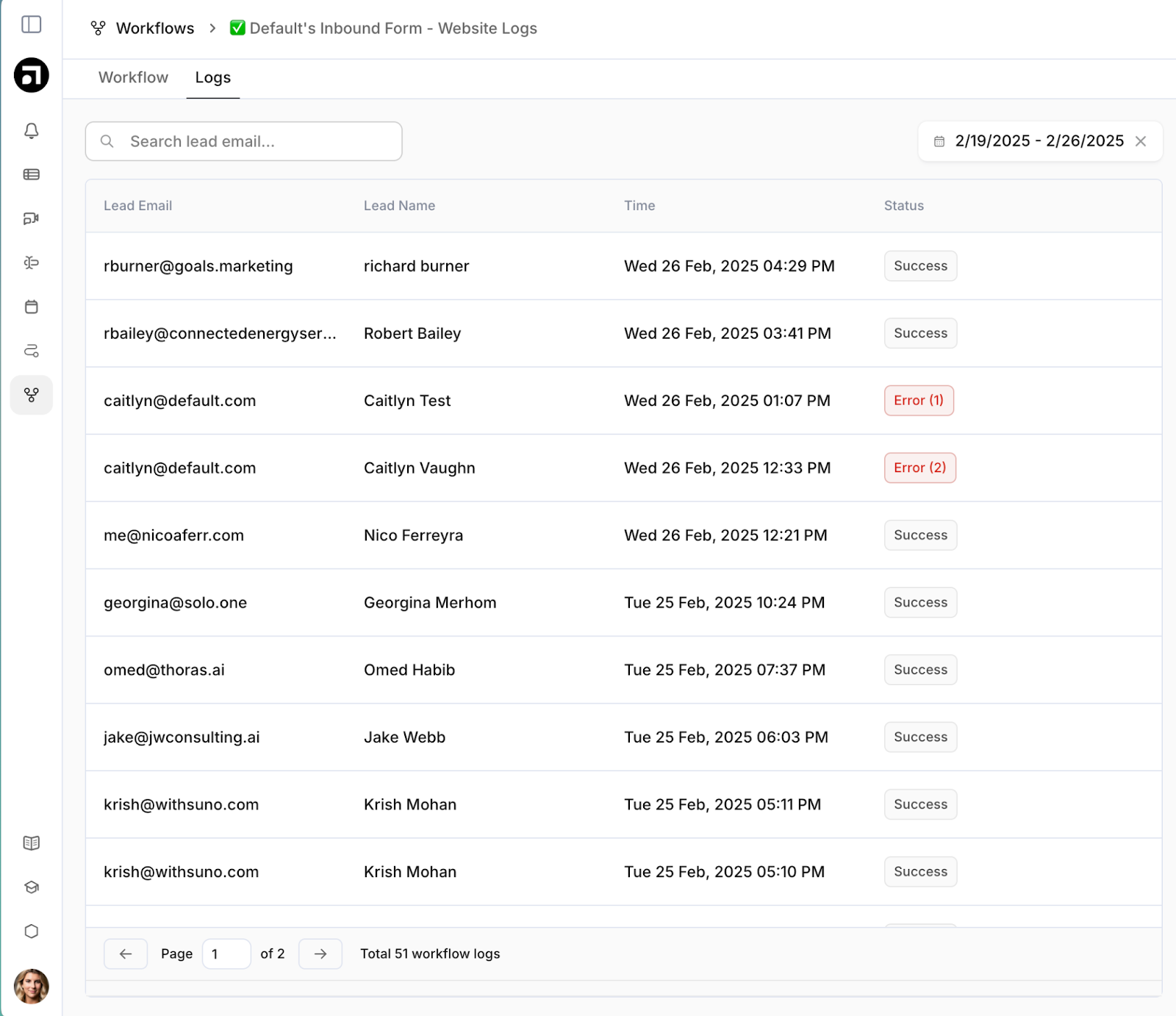Try Default

See how revenue teams automate revenue operations with Default.

Key Takeaways
This common Salesforce issue can halt workflows, delay operations, and create headaches for admins and developers alike. But the good news? Fixing it doesn’t have to be complicated.
In this guide, we'll break down exactly what the Unhandled Fault error means, why it happens, and—most importantly—how to fix it step by step.
Few things are as frustrating as hitting an "Unhandled Fault" error in Salesforce—especially when it disrupts critical business processes. You're in the middle of an automated flow, expecting everything to work seamlessly, and suddenly, an error message pops up without clear instructions on how to fix it.
What is "An Unhandled Fault" error in Salesforce?
An "Unhandled Fault" error in Salesforce occurs when a workflow encounters an unexpected issue that hasn't been accounted for in error handling. Instead of gracefully managing the failure, Salesforce terminates the process and displays a generic error message—leaving users with little insight into what went wrong.

This error can disrupt automation, break workflows, and cause operational delays—especially in mission-critical processes like lead routing, approvals, or data syncs between systems. Without proper debugging tools, identifying the root cause can be time-consuming, adding friction to an already frustrating situation.
However, these errors aren’t unsolvable. With the right approach, you can diagnose these issues, apply targeted fixes, and prevent them from recurring. In the next section, we’ll explore the most common causes of Unhandled Faults and how to tackle them efficiently.
Most common causes of Unhandled Fault errors
Before jumping into the fixes, it’s crucial to understand why the Unhandled Fault error occurs in Salesforce. Identifying the root cause will save time and prevent recurring issues. Below are the most common triggers behind this error.
Cause 1: Missing fault connectors in flow
Salesforce Flows need fault connectors to handle errors gracefully. If a Flow step encounters an issue—like a failed record update or an API failure—without a fault path, Salesforce terminates the Flow, triggering an Unhandled Fault error instead of providing a meaningful message.
Cause 2: Insufficient user permissions
If a user running the Flow lacks the necessary permissions to access or modify a record, the Flow fails. This often happens when standard profiles don’t have proper CRUD (Create, Read, Update, Delete) permissions for specific objects or fields.
Cause 3: Invalid or missing data
Flows rely on structured data. If a Flow references a field that is blank, formatted incorrectly, or missing, it can trigger an Unhandled Fault. Common scenarios include:
- A required field not being populated
- Mismatched data types (e.g., passing text into a number field)
- Dependent picklist values not being set correctly
Cause 4: Apex or API call failures
If a Flow depends on an Apex class, an external API, or a third-party integration, and that external process fails, it can result in an Unhandled Fault. This is especially common when an API response is delayed, returns an error, or when an Apex method encounters an unexpected issue.
7-step guide to fixing the unhandled fault error in Salesforce
Now that we’ve identified the common causes, let’s walk through a step-by-step troubleshooting process to fix the Unhandled Fault error in Salesforce. Whether you're managing an inbound lead generation workflow or automating internal processes, these steps will help you diagnose and resolve the issue efficiently.
Step 1: Identify the error details in debug logs
Before making changes, you need to understand where and why the Flow failed. Navigate to Setup > Flows > Debug Logs and locate the error entry. Look for:
- The exact Flow element that failed
- The error message or code
- The affected record or object
This will provide clues about the root cause and help build an inbound motion that operates without disruptions.

Step 2: Check for missing fault connectors
Go to your Flow in Flow Builder and inspect each element, especially:
- Record Updates, Create, or Delete steps
- Apex Action elements
- Decision nodes
If any of these lack a fault path, Salesforce won’t handle errors properly. Add a Fault Connector that directs failures to an error-handling screen or sends a notification—essential for ensuring smooth lead follow-up workflows.

Step 3: Verify user permissions
Ensure that the user running the Flow has the correct Object and Field-Level Security permissions:
- Check Profiles and Permission Sets under Setup > Users
- Confirm access to all relevant objects and fields
- Ensure CRUD (Create, Read, Update, Delete) and FLS (Field-Level Security) are configured properly
If permissions are missing, update the user’s access and test the Flow again to maintain a seamless automated inbound scheduling process.

Step 4: Validate data inputs
Run a test to check if missing or invalid data is causing the issue:
- Are required fields populated?
- Are picklists using valid values?
- Are data types formatted correctly (e.g., no text in a number field)?
Use the Flow Debugger to simulate inputs and pinpoint any data-related failures. A lead qualification checklist can also help ensure that required data fields are consistently completed before the Flow runs.
Step 5: Debug Apex and API integrations
If your Flow depends on an Apex class or API, check for:
- Governor Limits being exceeded
- Unexpected API errors or timeouts
- Incorrect API response formats
Use Apex Logs (Setup > Debug Logs) or Integration Logs to trace the failure. If needed, add error-handling logic to catch and manage these failures.
Step 6: Test the flow in a sandbox environment
Never apply fixes directly in production. Instead:
- Clone the Flow and test in a sandbox
- Use Flow Debug Mode to watch how data moves
- Validate that all fault paths are working correctly
Once confirmed, deploy the fixes safely.
Step 7: Implement error notifications for future issues
To prevent future Unhandled Fault errors, set up proactive alerts:
- Email Notifications: Use the Send Email Action in Flows
- Custom Error Screens: Redirect users instead of allowing a crash
- Slack or Chatter Alerts: Send real-time updates when failures occur
By proactively handling errors, you minimize disruptions and reduce troubleshooting time in the future.
Default: The smart choice for hassle-free automation
Manually troubleshooting Unhandled Fault errors in Salesforce can be time-consuming and frustrating. Whether you're managing inbound marketing automation workflows or optimizing CRM processes, Default eliminates the guesswork by giving you full visibility into what went wrong and why—making debugging and maintenance dramatically easier.
Here’s why Default is the smarter choice for automation:
- Live Workflow Replay – Instantly watch a step-by-step playback of failed workflows to pinpoint exactly where the error occurred. No more digging through logs.

- Comprehensive error logs – Access detailed error messages, failure codes (300, 404, etc.), and root cause explanations to quickly diagnose issues.
- Proactive error handling – Default doesn’t just flag errors—it provides actionable fixes and recovery options before they impact your operations.
- Seamless integration – Works effortlessly with Salesforce and other automation tools, ensuring zero disruptions to your business processes.

- Scalability & flexibility – Whether you're managing simple workflows or complex, multi-step processes, Default adapts to your automation needs and integrates smoothly with lead distribution software to ensure leads are routed efficiently.
- User-friendly interface – Designed for admins and technical teams alike, making troubleshooting intuitive without requiring deep coding knowledge.
- Best lead enrichment tools – Gain deeper insights by enriching lead data within your workflows, improving lead accuracy and efficiency.

Ready to experience automation without roadblocks? Try Default today and eliminate Unhandled Fault errors for good.
Final thoughts
Still, manual debugging adds overhead—and that’s exactly where Default shifts the equation.
With live workflow replay, step-specific error insights, and built-in recovery paths, Default brings clarity and speed to what’s otherwise a black box.
Ready to move faster and troubleshoot smarter?Try Default today and take full control of your workflow automation.
Conclusion
Unhandled Fault errors in Salesforce can stall progress, especially when you’re scaling complex systems like inbound lead generation management. This guide walks you through a clear, repeatable process to troubleshoot errors, apply precise fixes, and prevent future failures.

Former pro Olympic athlete turned growth marketer! Previously worked at Chili Piper and co-founded my own company before joining Default two years ago.
Accelerate your growth with Default.
Revamp inbound with easier routing, actionable intent, and faster scheduling




















%201.svg)



.svg)





%201.svg)



%201.svg)

